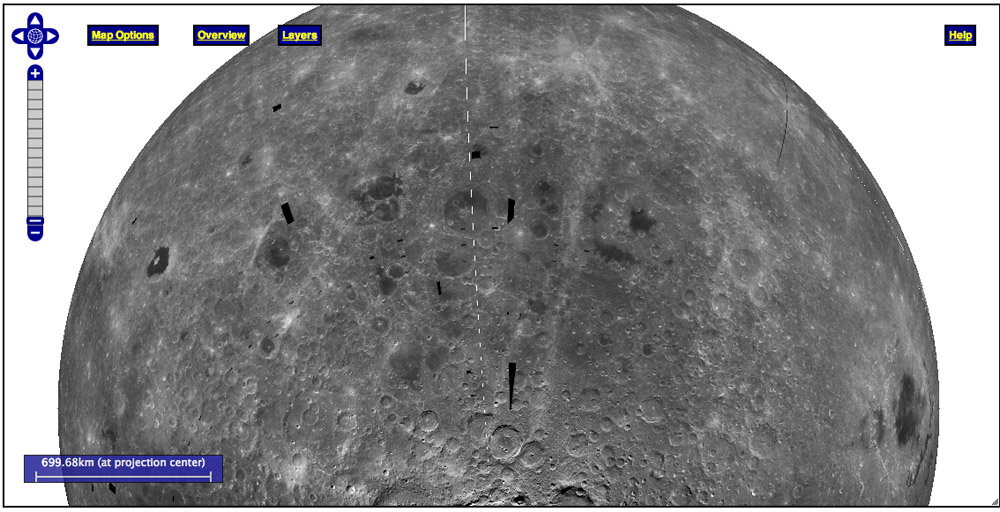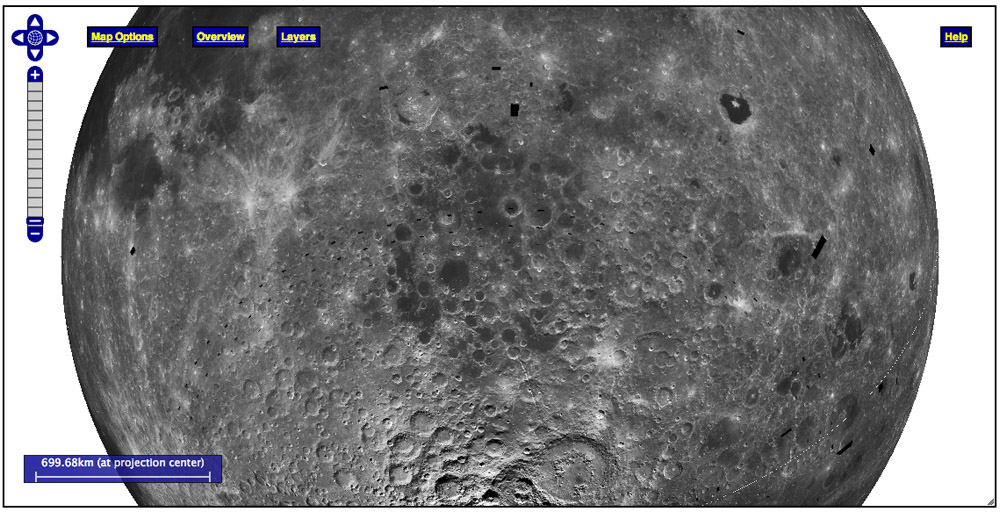April 20, 2023
Big Sister, Little Brother?
Originally published May 27, 2013
images from LunaServ (NASA/GSFC/Arizona State University)
The LRO Camera team at Arizona State University has released a new mapping tool that I used to make these two images. Lunaserv is a downloadable or online tool that displays LRO, Clementine and Lunar Orbiter images maped into various projections. I like the overhead perspective that QuickMap doesn't provide; but Lunaserv doesn't include the measuring tools of QuickMap. These two images show at the same scale, Clementine mosaics of the two oldest basins on the Moon: South Pole-Aitken at the top and Australe below. Both have little or no rim structure, but SPA is a very deep hole, about 12 km, whereas Australe is only a few kilometers. They have a resemblence in that each is best defined as a circle of low albedo, but Australe has greater contrast with the surrounding highlands because its dark material is mare lava, whereas in SPA the mare is subservient to the widespread less dark lower crust material. Australe's mare fills crater floors and the spaces betwen craters. In SPA there are some crater-floor patches of mare lavas but the dark material appears to be everywhere. SPA is widely acknowledged to be the oldest visible basin on the Moon, and Australe is quite old but probably not as old. Both formed long enough ago that most of their rim and inner ring structures have been destroyed. Australe used to be explained as having formed when the Moon's crust was warm enough that it couldn't support the topographic hole and rim so they isostatically flattened. But SPA didn't do that because its great depth remains - why?
Chuck Wood
Yesterday's LPOD: New Light On the Basin Near Schiller
Tomorrow's LPOD: Ridges, Real And Apparent
COMMENTS?
Register, Log in, and join in the comments.





